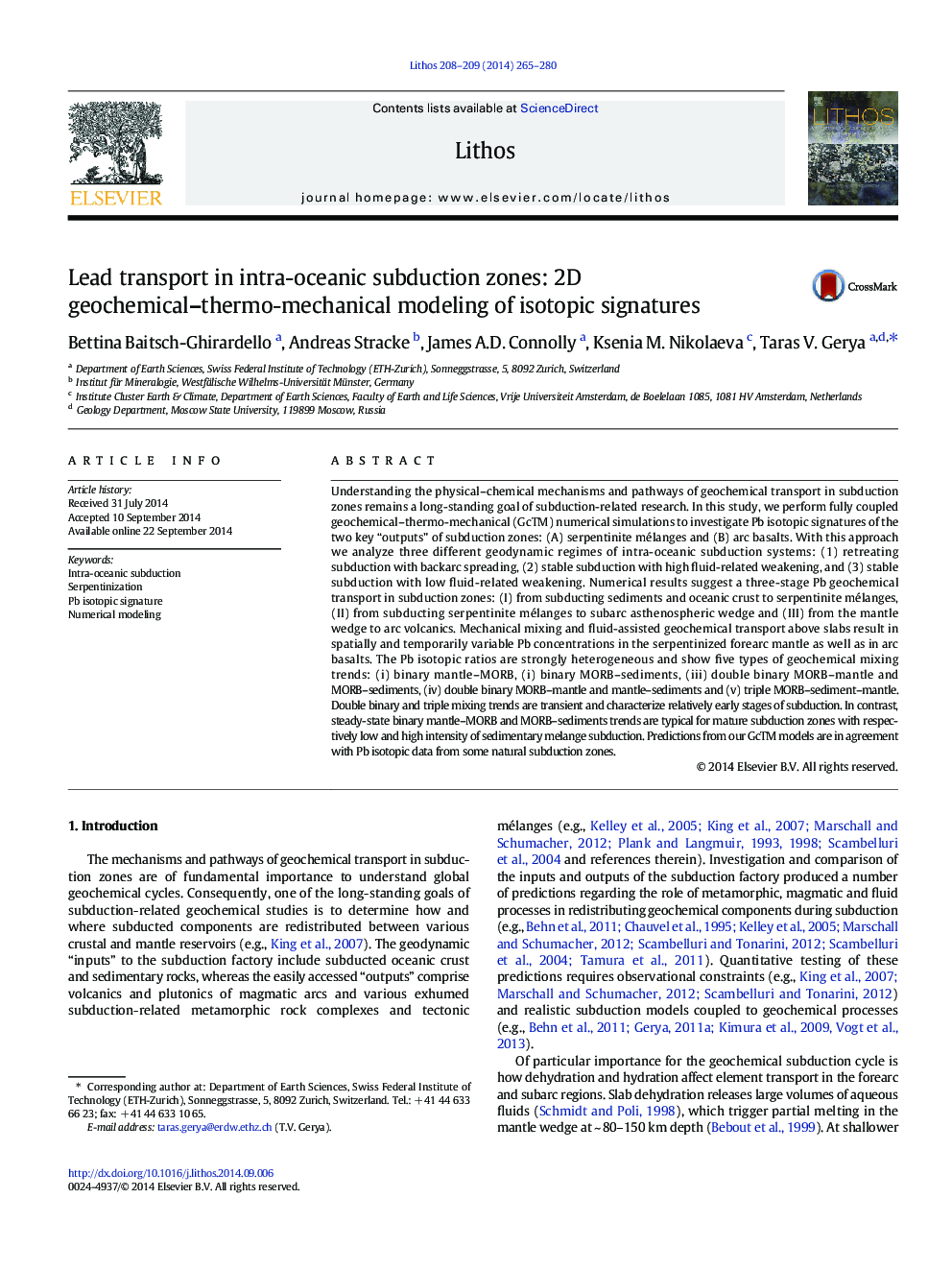| Article ID | Journal | Published Year | Pages | File Type |
|---|---|---|---|---|
| 4715915 | Lithos | 2014 | 16 Pages |
•Coupled geochemical–thermo-mechanical model of subduction is presented.•Pb isotopic signatures in serpentinite mélanges and mantle-derived volcanics are modeled.•Three types of transient and two types of steady-state isotopic mixing trends are found.
Understanding the physical–chemical mechanisms and pathways of geochemical transport in subduction zones remains a long-standing goal of subduction-related research. In this study, we perform fully coupled geochemical–thermo-mechanical (GcTM) numerical simulations to investigate Pb isotopic signatures of the two key “outputs” of subduction zones: (A) serpentinite mélanges and (B) arc basalts. With this approach we analyze three different geodynamic regimes of intra-oceanic subduction systems: (1) retreating subduction with backarc spreading, (2) stable subduction with high fluid-related weakening, and (3) stable subduction with low fluid-related weakening. Numerical results suggest a three-stage Pb geochemical transport in subduction zones: (I) from subducting sediments and oceanic crust to serpentinite mélanges, (II) from subducting serpentinite mélanges to subarc asthenospheric wedge and (III) from the mantle wedge to arc volcanics. Mechanical mixing and fluid-assisted geochemical transport above slabs result in spatially and temporarily variable Pb concentrations in the serpentinized forearc mantle as well as in arc basalts. The Pb isotopic ratios are strongly heterogeneous and show five types of geochemical mixing trends: (i) binary mantle–MORB, (i) binary MORB–sediments, (iii) double binary MORB–mantle and MORB–sediments, (iv) double binary MORB–mantle and mantle–sediments and (v) triple MORB–sediment–mantle. Double binary and triple mixing trends are transient and characterize relatively early stages of subduction. In contrast, steady-state binary mantle–MORB and MORB–sediments trends are typical for mature subduction zones with respectively low and high intensity of sedimentary melange subduction. Predictions from our GcTM models are in agreement with Pb isotopic data from some natural subduction zones.
Graphical abstractFigure optionsDownload full-size imageDownload as PowerPoint slide
